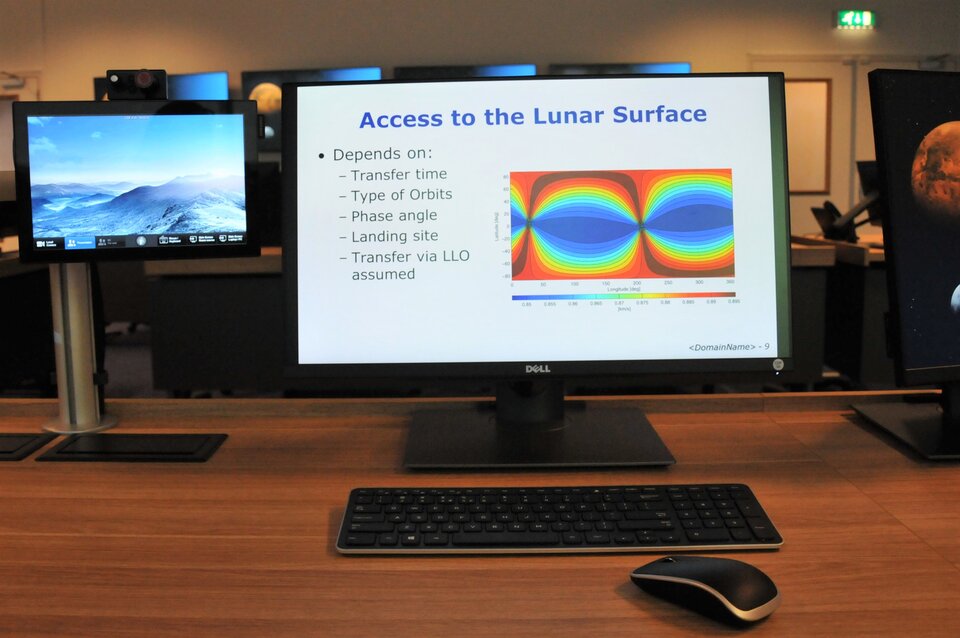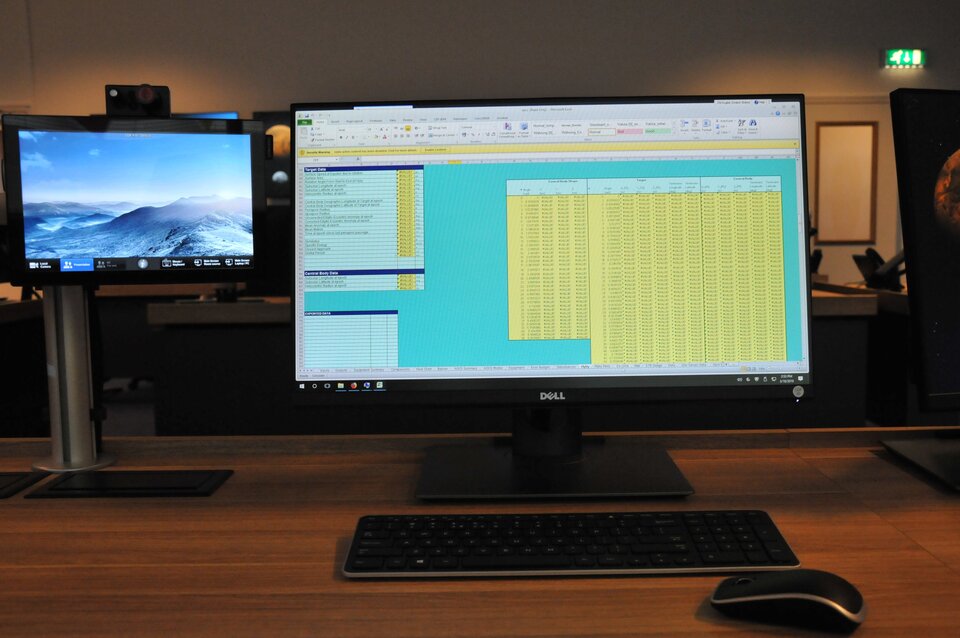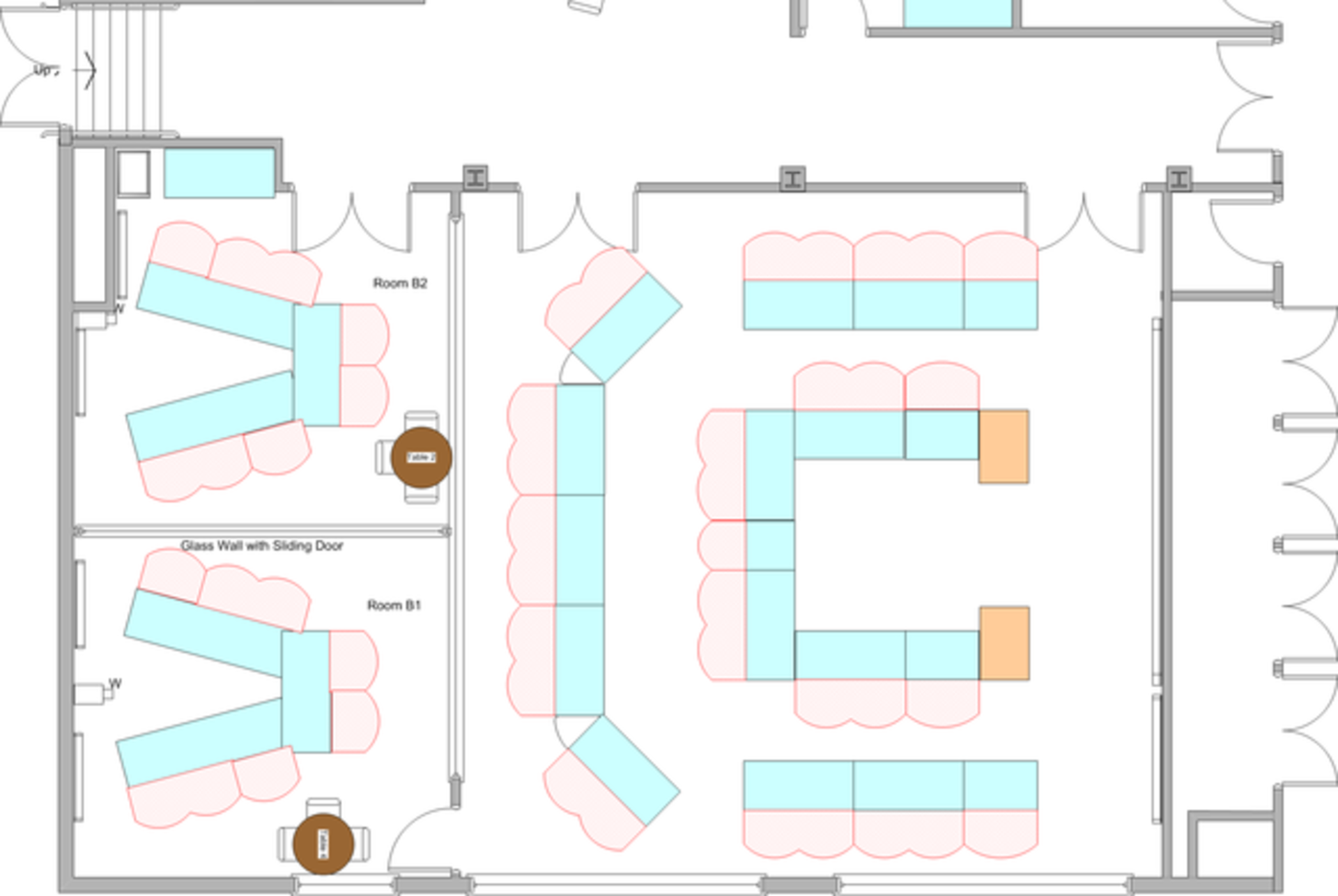Design Stations 1/2
Team Leader

The team leader is responsible for managing the study. This involves working together with the customer to define the scope of the study and mission objectives that must be analyzed in the context of the study. As well, he/she works with the CDF Manager to select team members from across ESA (and sometimes external organisations) to support and participate in the study.
During each study the team leader organises the design sessions, supervises the work of the team members, and works closely with the systems engineers to ensure the fastest possible convergence of the design with the mission objectives and requirements. At the conclusion of the study, the team leader oversees the compilation of the final report, along with the technical author.
Systems

During a study, the systems engineer conducts the majority of systems-level analysis for the mission, under the direction of the study team leader. The systems engineer is in charge of budgets, such as mass and power, and checks if the design satisfies the mission requirements. The holder of this post coordinates the various disciplines during the study, and can run design sessions in the absence of the team leader. The system engineer is supported by the Assistant System Engineer who also controls the distribution of content to the screens and acts as the moderator for the sessions as well as keeping track of the system model used by the participants.
Mission Analysis

The mission analyst works with the team leader and system engineer to define the operational environment of the spacecraft throughout its mission. These include launch profile, orbital analysis, and trajectory definition. They are critical in the preliminary phase of a study and support the definition of mission requirements and the development of a mission profile. Throughout the study, the mission analyst updates and optimises the mission profile as the spacecraft design progresses.
CDF PC station for Ground Systems and Operations

The ground systems and operations engineer analyses the resources required to support the spacecraft from a ground station and operational point of view and calculates the cost of operating the mission throughout its lifecycle. He/she works with the communications engineer to select the ground station(s) to be used, and the cost engineer to incorporate supporting workforce and equipment into the overall cost estimate. He/she assesses the operational complexity of the overall mission working with the Systems engineer to optimise operational complexity versus cost constraints.
Programmatic and AIV (assembly integration and verification)

The programmatics and AIV engineer is responsible for developing a plan for the development, fabrication, testing, and integration of the spacecraft so that it can be launched on schedule. This involves analysing the time for development work and procurement, and defines the set of test models and testing procedures. As well, he/she advises other disciplines if the design can be easily tested and integrated.
Technical Risk Assessment

The risk engineer analyses the preliminary spacecraft design and identifies risks facing the spacecraft during the mission, based on the designs from the other disciplines. This includes the definition of a risk management policy, assessment of risks, and communicating these risks to the team leader. The overall goal is to use this information to mitigate risk to improve the likelihood of achieving the project goals.
Cost Analyst

The holder of this position is responsible for the production of preliminary design industrial cost estimates and for the provision of a cost-guided approach to the overall system design throughout a study.
Simulation

The simulation engineer is responsible for creating a simulation of the mission so that the motion of the spacecraft can be analysed at any time during the mission. He/She is responsible for ensuring that the simulation accurately reflects the latest design and mission profile data. Many disciplines use the results of the simulation, such as solar aspect angles for power generation, earth viewing times for communications, and observed fields of view for science.
Configuration

The configuration engineer is responsible for the arrangement of the components within the spacecraft, and to ensure that the components fit within their allocated locations. He/she works with the structural engineer to generate a CAD file to represent the assembled spacecraft, and with the Programmatics / AIV engineer to analyse the manufacturability and ease of assembly of the design.


